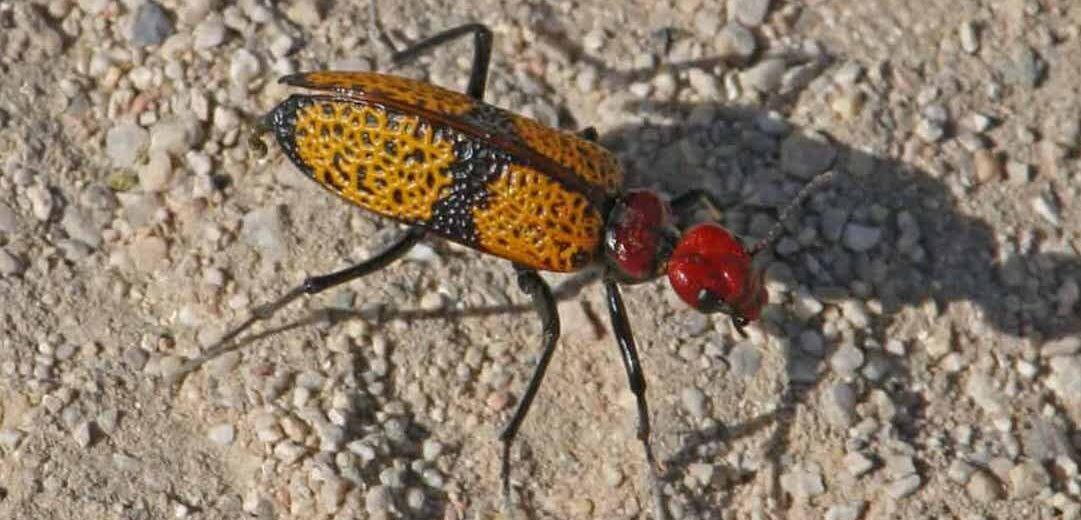
The blister beetle. These guys have a nasty defense in that they can break vessels in their legs which then secretes a toxic poison which causes severe blistering in minutes! A pest to livestock and some people, they feed on plant matter and the larvae feed on other insects. They have been used in medicinal practices in the past, but now are only used for dermatological purposes.
First the Stats…
Scientific name: Meloidae
Length: Up to 1.5 inches
Lifespan: Up to a year, as larvae | Adults live for about 3 – 4 months
Now on to the Facts!
1.) Adult blister beetles are herbivorous (they consume plant matter and pollen). Grubs are insectivorous (they consume other insects) and can be parasitic (lives in or on another organism – its host – and benefits by getting nutrients at the host’s expense) and eat grasshopper eggs and can feed on bee larvae.
2.) Blister beetles are able secrete a caustic yellowish fluid from their leg joints called cantharidin. Cantharidin is a chemical that can cause irritation, swelling, and blistering when it contacts human skin!
3.) Cantharidin is used by dermatologists to help remove skin tags and warts.
4.) Horses and other livestock can sometimes be severely affected by blister beetles! Blister beetles, feeding in a hay field, may accidentally be ground up when the hay is harvested. The cantharidin leeches into the hay and can be eaten by the farm animals, potentially resulting in death.
5.) The female lays eggs under rocks or at the base of shrubs. The larvae prey on grasshopper eggs and can hitch a ride on bees to their hive and will then feast on developing bees.
But wait, there’s more on the blister beetle!
6.) Like all beetles, these beetles have a complete metamorphosis: egg, larva, pupa and adult. Blister beetles are ‘hypermetamorphic’ – a kind of complete metamorphosis in which the different larval instars represent two or more different forms of larvae.
7.) In the past, people have used cantharidin as a medicinal property. But there is a problem with this though in that the effects of this toxin can range from severe digestive issues, like diarrhea, to internal bleeding, kidney failure, to potential death. Symptoms of poisoning can include nausea, stomach pain, vomiting, bloody urine, and even coma.
Did you know…?
Blister beetles will use their cantharidin to coat their eggs in order to protect them from predation.
8.) The beetles are mostly diurnal (active during the day), but some are nocturnal (active at night).
9.) There are approximately 2,500 known species worldwide.
Now a Short Blister Beetle Video!
Also, check out the Critter Science YouTube channel. Videos added frequently!
Want to suggest a critter for me to write about? Let me know here.




Leave a Reply